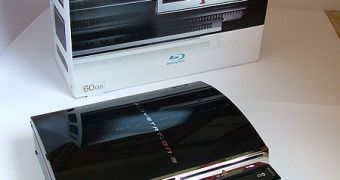Understanding the way black holes vibrate is not the easiest of tasks, and to calculate all possible outcomes for various scenarios, variables, and surprise elements is a very demanding process, in terms of the computing resources it requires. That's why some of the smaller labs performing calculus in the area cannot afford to pay thousands of dollars to supercomputer grids, for a bit of time to run their simulations.
That's why scientists at the University of Alabama, in Huntsville, and the University of Massachusetts, in Dartmouth, decided to invest in a more unconventional computer, namely Sony's PlayStation 3. Researchers hooked up about 16 consoles together, for an estimated total price of a bit over $6,000. With this rig, they were able to run dozens of simulations regarding the vibrations of black holes and to insert as many variables as they wished in the process.
What makes this so cost-feasible for the two universities is the fact that, if this solution hadn't been thought of, they would have had to pay $5,000 per simulation at various supercomputer labs. And it goes without saying that a few dozen simulations would have required a serious investment.
"You can build a cluster like this for perhaps $6,000, and then you can run the simulation as many times as you like at no additional cost. Science budgets have been significantly dropping over the last decade. Here's a way that people can do science projects less expensively," argues the builder of the PS3 cluster, Gaurav Khanna, a physics professor at the University of Massachusetts.
"Think of a bell. A bell rings, but eventually it gets quiet. The energy that goes out with the sound waves is energy that the bell is losing. A black hole does exactly that in gravitational waves instead of sound waves. A black hole that is wobbling is emitting gravitational waves. When those vibrations die down you get a quiet black hole," concluded University of Alabama assistant physics professor, Dr. Lior Burko.

 14 DAY TRIAL //
14 DAY TRIAL //